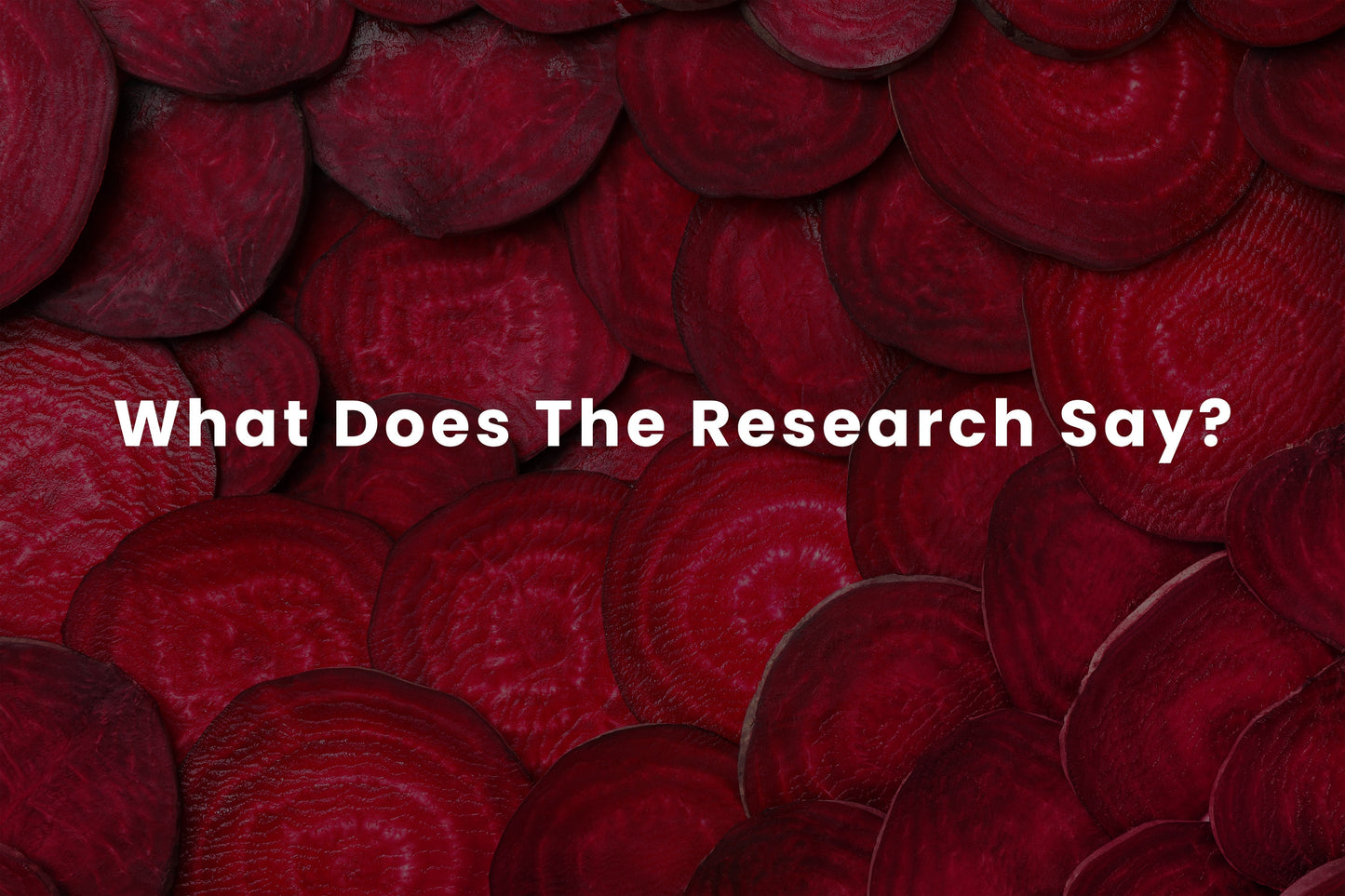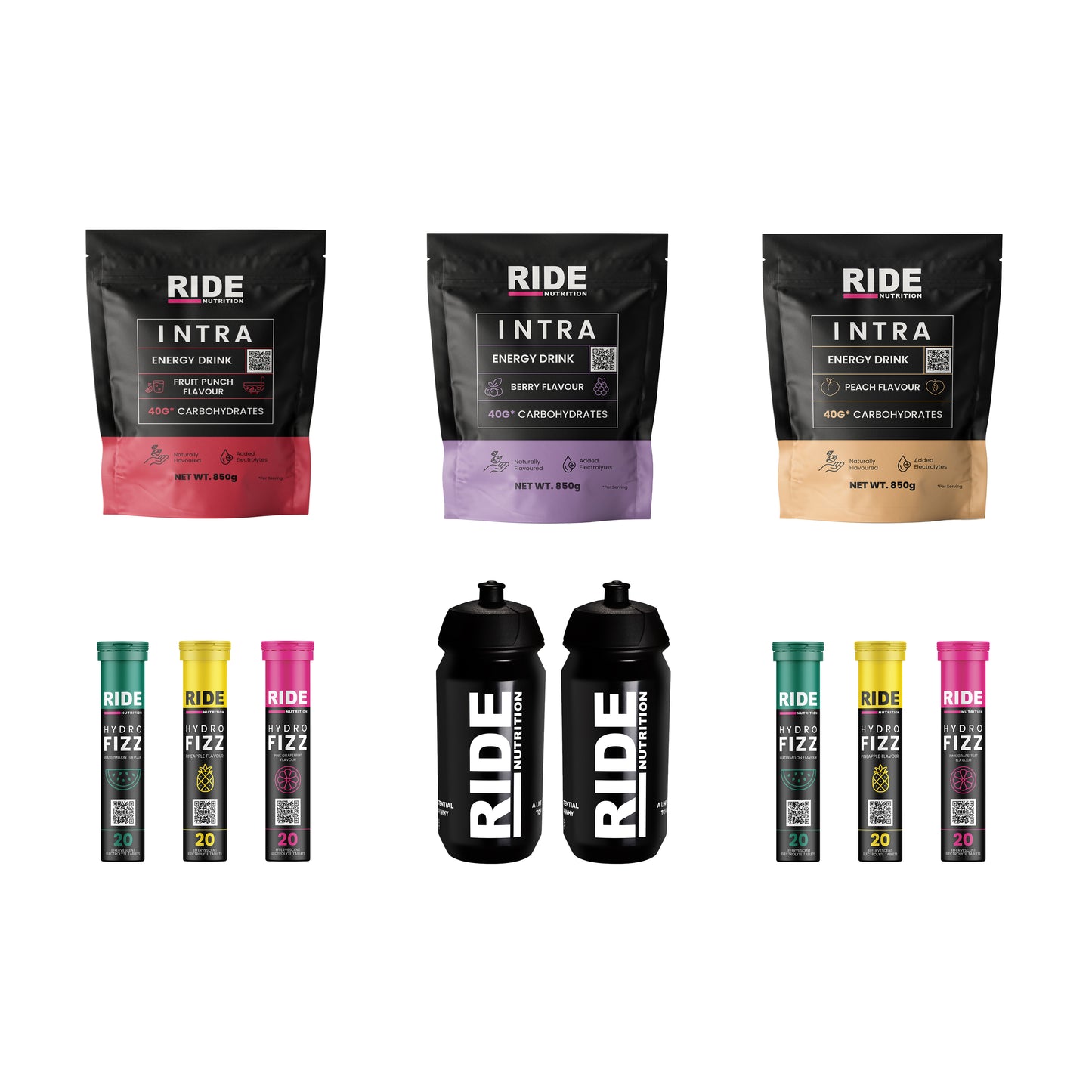
What's The Hype?
What Is Nitric Oxide?
Nitric Oxide And Potential Performance Benefits
- Increased blood flow – Nitric oxide mediates smooth muscle relaxation. As the smooth muscle within the blood vessels relaxes, we see an increase in width, thus allowing more blood to flow freely through the vessel. In turn this increases oxygen supply to the working muscles and also enhances the removal of metabolic waste products away from the muscles (Macuh and Knap, 2021).
- Reduced oxygen cost of submaximal exercise – Numerous studies have demonstrated that dietary nitrate supplementation reduces the oxygen cost of exercise (Bailey et al., 2009, 2010; Larsen et al., 2007, 2010, 2011). This means the working muscles require less oxygen to perform at any given submaximal work rate, thus improving exercise efficiency, fatigue resistance and exercise performance. Such enhanced metabolic efficiency after nitrate supplementation is believed to be largely underpinned by improved mitochondrial efficiency (Larson et al., 2011). In other words, less oxygen is required to produce Adenosine triphosphate (the primary fuel source of all metabolic reactions).
- Enhanced muscle contractility – Skeletal muscle properties such as speed and ultimately power have been shown to increase post nitrate ingestion, thereby improving muscular power and sprint exercise performance. The precise mechanism underpinning this is still unknown, however changes in Ca2+signalling as a result of increased nitric oxide bioavailability are likely to play a role (Coggan and Peterson, 2018).
- Improved cognitive function – The development of mental fatigue and decline in cognitive ability during high intensity exercise is well established (Fery et al. 1997; Iadecola 1993; Reilly and Smith 1986). According to Thompson et al. (2015) the decline in decision making speed during prolonged intermittent exercise is attenuated through the ingestion of dietary nitrate. This is thought to be largely underpinned by improved regional brain profusion, resulting in increased cerebral oxygenation (Presley et al., 2011).
How Is Nitric Oxide Produced?
Nitric Oxide can be produced via two main pathways;
- The L-arginine-NOS-Nitric Oxide Pathway - Oxidation of L-arginine, catalysed by nitric oxide synthase (NOS) enzymes, thus producing Nitric Oxide and the by-products nitrate and nitrite (Moncada and Higgs, 1993). Nitrate and nitrite can be recycled back into nitric oxide via pathway number 2 below.
- The Nitrate-Nitrite-Nitric Oxide Pathway - The reduction of nitrate to nitrite, and subsequent further reduction of nitrite to nitric oxide (Jones, 2014).
What Happens when we Consume Nitrates?
Upon consumption of nitrates we see an example of the Nitrate-Nitrite-Nitric Oxide pathway. Examples of nitrate rich foods include beetroot, spinach and lettuce.
When ingested, nitrate circulates in blood plasma after being rapidly absorbed in the upper gastrointestinal tract. Approximately 25% is then concentrated in saliva after being taken up by the salivary glands (Spiegelhalder et al., 1976). Anaerobic bacteria on the tongue is then responsible for the reduction of nitrate into nitrite (Govoni et al., 2008).
Once swallowed, some of the nitrite is reduced to form nitric oxide in the acidic conditions of the stomach, whilst the rest of the nitrite enters the systemic circulation. A number of proteins and enzymes then catalyse the reduction of nitrite to nitric oxide in the bloodstream and other tissues (Cosby et al., 2003).
When To Consume Nitrates?
It is recommended to consume nitrates 2-3 hours prior to exercise. This is because after the ingestion of nitrates, plasma nitrite levels peak after approximately 2–3 hours. Levels then remain elevated for approximately 6 hours before returning to baseline after approximately 24 h (Webb et al., 2008).
Both short-term (acute) and long-term (chronic) nitrate supplementation strategies have been shown to enhance exercise efficiency and performance. With this being said, chronic multiple day loading strategies are thought to provide a greater benefit (Hoon et al., 2013).
The Effect Of Polyphenols On Nitric Oxide Production
Polyphenols are powerful antioxidants that naturally occur in plants. Examples of polyphenol rich foods include Montmorency cherries, blueberries, dark chocolate, pecan nuts and kidney beans.
Interestingly, polyphenols have been shown to optimise nitric oxide formation by increasing the expression of the enzyme endothelial nitric oxide synthase (Deley et al., 2017; Xu et al., 2004). Thus enhancing the production of nitric oxide through the L-arginine-NOS-Nitric Oxide Pathway.
The ways in which nitric oxide bioavailability can be increased via nitrate ingestion, alongside potential physiological effects can be summarised in the infographic below.

References
Bailey, S.J., Fulford, J., Vanhatalo, A., Winyard, P.G., Blackwell, J.R., DiMenna, F.J., Wilkerson, D.P., Benjamin, N. and Jones, A.M., 2010. Dietary nitrate supplementation enhances muscle contractile efficiency during knee-extensor exercise in humans. Journal of applied physiology, 109(1), pp.135-148.
Bailey, S.J., Winyard, P., Vanhatalo, A., Blackwell, J.R., DiMenna, F.J., Wilkerson, D.P., Tarr, J., Benjamin, N. and Jones, A.M., 2009. Dietary nitrate supplementation reduces the O2 cost of low-intensity exercise and enhances tolerance to high-intensity exercise in humans. Journal of applied physiology.
Coggan, A.R. and Peterson, L.R., 2018. Dietary nitrate enhances the contractile properties of human skeletal muscle. Exercise and sport sciences reviews, 46(4), p.254.
Cosby, K., Partovi, K.S., Crawford, J.H., Patel, R.P., Reiter, C.D., Martyr, S., Yang, B.K., Waclawiw, M.A., Zalos, G., Xu, X. and Huang, K.T., 2003. Nitrite reduction to nitric oxide by deoxyhemoglobin vasodilates the human circulation. Nature medicine, 9(12), pp.1498-1505.
Deley, G., Guillemet, D., Allaert, F.A. and Babault, N., 2017. An acute dose of specific grape and apple polyphenols improves endurance performance: a randomized, crossover, double-blind versus placebo controlled study. Nutrients, 9(8), p.917.
Fery, Y.A., Ferry, A., Hofe, A.V. and Rieu, M., 1997. Effect of physical exhaustion on cognitive functioning. Perceptual and motor skills, 84(1), pp.291-298.
Govoni, M., Jansson, E.Å., Weitzberg, E. and Lundberg, J.O., 2008. The increase in plasma nitrite after a dietary nitrate load is markedly attenuated by an antibacterial mouthwash. Nitric oxide, 19(4), pp.333-337.
Hoon, M.W., Johnson, N.A., Chapman, P.G. and Burke, L.M., 2013. The effect of nitrate supplementation on exercise performance in healthy individuals: a systematic review and meta-analysis. International journal of sport nutrition and exercise metabolism, 23(5), pp.522-532.
Hord, N.G., Tang, Y. and Bryan, N.S., 2009. Food sources of nitrates and nitrites: the physiologic context for potential health benefits. The American journal of clinical nutrition, 90(1), pp.1-10.
Jones, A.M., 2014. Dietary nitrate supplementation and exercise performance. Sports medicine, 44(1), pp.35-45.
Iadecola, C., 1993. Regulation of the cerebral microcirculation during neural activity: is nitric oxide the missing link?. Trends in neurosciences, 16(6), pp.206-214.
Larsen, F.J., Schiffer, T.A., Borniquel, S., Sahlin, K., Ekblom, B., Lundberg, J.O. and Weitzberg, E., 2011. Dietary inorganic nitrate improves mitochondrial efficiency in humans. Cell metabolism, 13(2), pp.149-159.
Larsen, F.J., Weitzberg, E., Lundberg, J.O. and Ekblom, B., 2007. Effects of dietary nitrate on oxygen cost during exercise. Acta physiologica, 191(1), pp.59-66.
Larsen, F.J., Weitzberg, E., Lundberg, J.O. and Ekblom, B., 2010. Dietary nitrate reduces maximal oxygen consumption while maintaining work performance in maximal exercise. Free Radical Biology and Medicine, 48(2), pp.342-347.
Lundberg, J.O., Weitzberg, E. and Gladwin, M.T., 2008. The nitrate–nitrite–nitric oxide pathway in physiology and therapeutics. Nature reviews Drug discovery, 7(2), pp.156-167.
Macuh, M. and Knap, B., 2021. Effects of Nitrate Supplementation on Exercise Performance in Humans: A Narrative Review. Nutrients, 13(9), p.3183.
Moncada, S. and Higgs, A., 1993. The L-arginine-nitric oxide pathway. New England journal of medicine, 329(27), pp.2002-2012.
Presley, T.D., Morgan, A.R., Bechtold, E., Clodfelter, W., Dove, R.W., Jennings, J.M., Kraft, R.A., King, S.B., Laurienti, P.J., Rejeski, W.J. and Burdette, J.H., 2011. Acute effect of a high nitrate diet on brain perfusion in older adults. Nitric Oxide, 24(1), pp.34-42.
Reilly, T. and Smith, D., 1986. Effect of work intensity on performance in a psychomotor task during exercise. Ergonomics, 29(4), pp.601-606.
Spiegelhalder, B., Eisenbrand, G. and Preussmann, R., 1976. Influence of dietary nitrate on nitrite content of human saliva: possible relevance to in vivo formation of N-nitroso compounds. Food and cosmetics toxicology, 14(6), pp.545-548.
Stamler, J.S. and Meissner, G., 2001. Physiology of nitric oxide in skeletal muscle. Physiological reviews, 81(1), pp.209-237.
Thompson, C., Wylie, L.J., Fulford, J., Kelly, J., Black, M.I., McDonagh, S.T., Jeukendrup, A.E., Vanhatalo, A. and Jones, A.M., 2015. Dietary nitrate improves sprint performance and cognitive function during prolonged intermittent exercise. European journal of applied physiology, 115(9), pp.1825-1834.
Webb, A.J., Patel, N., Loukogeorgakis, S., Okorie, M., Aboud, Z., Misra, S., Rashid, R., Miall, P., Deanfield, J., Benjamin, N. and MacAllister, R., 2008. Acute blood pressure lowering, vasoprotective, and antiplatelet properties of dietary nitrate via bioconversion to nitrite. Hypertension, 51(3), pp.784-790.
Xu, J.W., Ikeda, K. and Yamori, Y., 2004. Upregulation of endothelial nitric oxide synthase by cyanidin-3-glucoside, a typical anthocyanin pigment. Hypertension, 44(2), pp.217-222.

